Implementing the recently created user interface that enables operation in a Japanese environment has achieved “easy, immediate operation just for anyone.” The JPS-9030 has a wide range of expandability, including a gas cluster ion source and a high-temperature heating system, and comes standard with a twin anode and a Kaufman-type etching ion source.
Features
Wide Area Analysis that Can Be Measured in a Short Time
The JPS-9030 is an XPS best suited for average value analysis and can analyze a wide range of specimens, including areas of millimeter order. It makes it possible to gather specimen data despite a specimen's local contamination and segregation. It is appropriate for chemical bonding state analysis of powder, thin-film, plate specimens, and elemental analysis.
Example of Utilization of Wide Area Analysis - Elemental Analysis of LIB Cathode Material
The materials used for LIB cathodes seem uniform at first glance. The outcomes of elemental analysis, however, might differ if the analysis range is limited. By expanding the analysis range, the average information can be obtained without the impact of local contamination.

Image Credit: JEOL USA, Inc.
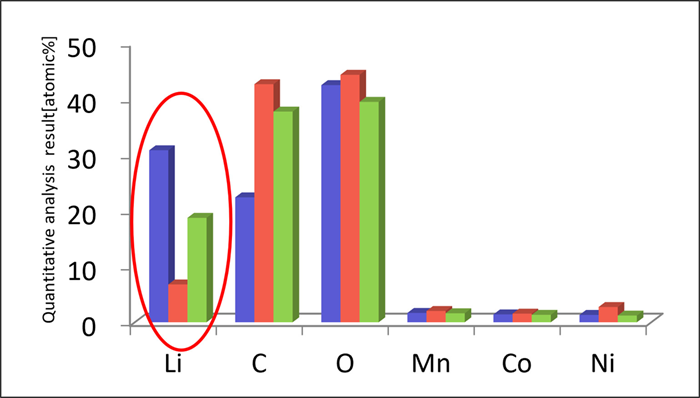
Measurements were taken at three locations to narrow down the analysis range. ⇒ There was a large variation in results. Image Credit: JEOL USA, Inc.
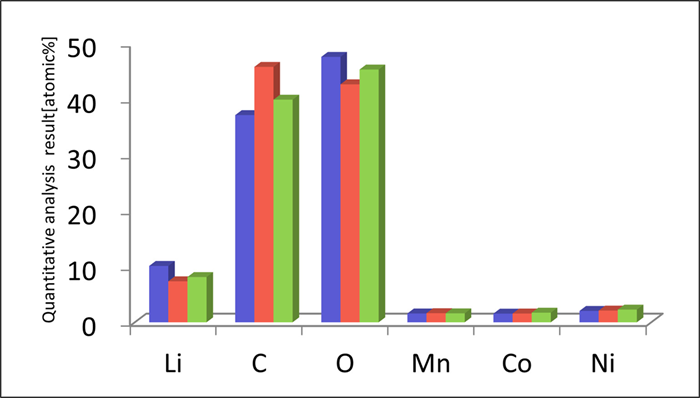
Measurements were taken at three locations to narrow down the analysis range. ⇒ There was a small variation in results. Image Credit: JEOL USA, Inc.
Software SPECSURF Enabling Easy Operations
The recently created software SPECSURF Ver. 2.0 for the Japanese language combines a tab window system with a Ribbon-style GUI to create an intuitive mouse-only operating environment.
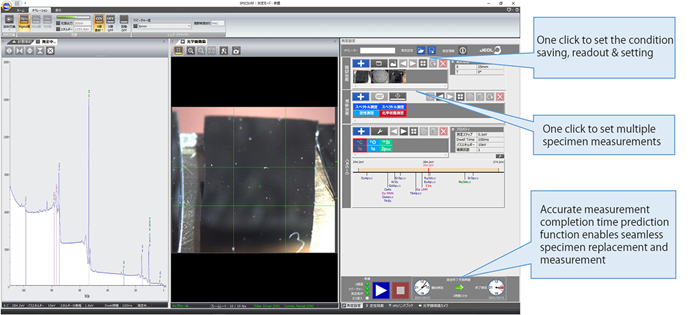
Image Credit: JEOL USA, Inc.
Instrument Configuration Enabling Measurement of a Wide Range of Materials – Mg/Al Twin Anode X-Ray Source
The JPS-9030 can be used with both a monochromatic and an Mg/Al twin anode X-ray source. It is possible to analyze a specimen that contains multiple elements and with which the photoelectron peak and Auger peak overlap by using the Mg/Al twin anode X-ray source, which can switch the X-rays to irradiate a specimen between Mg K ray and Al K ray.
- One-click operation for saving, recalling, and setting measurement conditions
- One-click setup for measuring multiple specimens
- Accurate prediction of measurement completion time enables smooth specimen replacement and continuous analysis
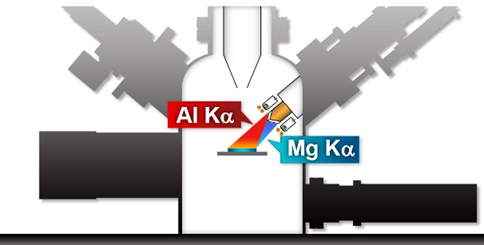
Image Credit: JEOL USA, Inc.
Example of Utilization of Mg/Al Twin Anode X-Ray Source- Analysis of a Specimen Containing Fe, Ni
A specimen with multiple transition metal elements is one instance of an XPS spectrum where the photoelectron peak and Auger peak overlap. The measurement example of a specimen containing iron and nickel is shown below. It demonstrates how a magnesium X-ray source can prevent the peak overlap seen with an aluminum X-ray source.
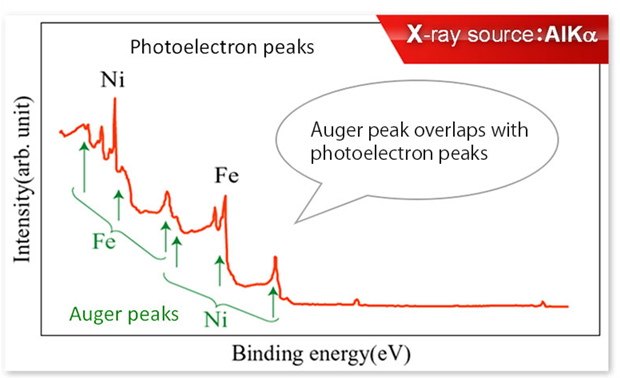
Measurement by Al X-ray source ⇒ Peak overlap. Image Credit: JEOL USA, Inc.
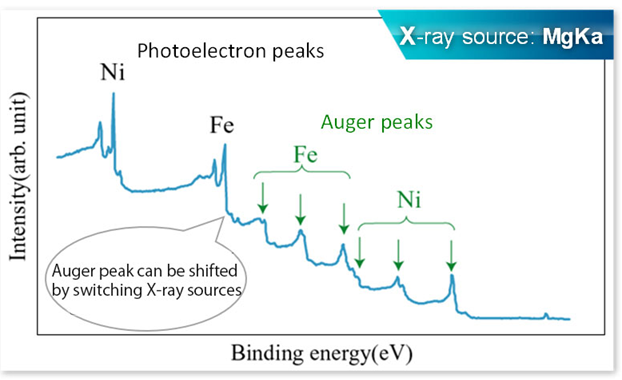
Measurement by Mg X-ray source ⇒ Avoids peak overlapping. Image Credit: JEOL USA, Inc.
Instrument Configuration Allowing for Measurement of a Wide Range of Materials – Kaufman-Type Ion Source
A Kaufman-type ion source is installed as an Ar ion source by the JPS-9030. Practical etching can be carried out even at low accelerating voltages because it permits a large electric current, because of this, etching can be done without destroying the specimen's structure.
The JPS-9030's ion source is positioned inside the specimen preparation chamber, etching-related contamination is reduced there, protecting the analysis chamber, which maintains the ultra-high vacuum, from contamination.
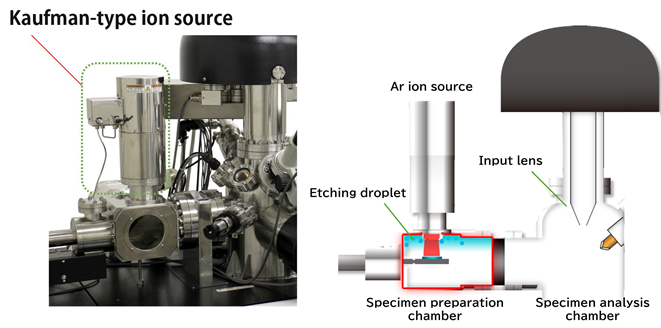
Image Credit: JEOL USA, Inc.
Example of Utilizing a Kaufman-Type Ion Source-Mo/Si Multi-Layer Film Mirror for EUV Lithography
Low-acceleration Ar ions can be irradiated from the specimen vertically by the JPS-9030. It can be applied to ultra-thin multi-layer film depth profile analysis.
The results of the depth profile analysis of the Mo/Si multi-layer film mirror for EUV lithography are displayed below. By grasping the layer structure and assessing the interface's sharpness, a thin film of roughly 10 nm/layer can be evaluated.
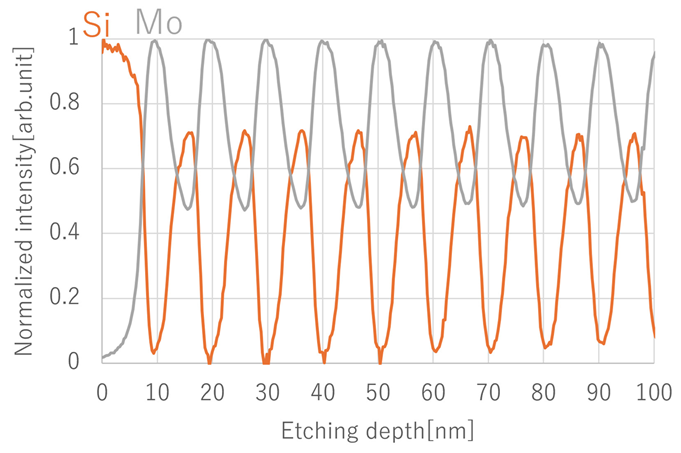
Image Credit: JEOL USA, Inc.
Instrument Configuration Enabling Measurement of a Wide Range of Materials – Other Various Attachments
There are numerous options available with the JPS-9030. JEOL is ready to create attachments at a users' request.
A Wealth of Options
- An X-ray source that is monochromatic and capable of increasing energy resolution
- Ar gas cluster ion source that works well with organic materials that are prone to damage
- Temperatures can reach 1000 °C with an infrared heating system.
- This transfer vessel supports air-isolated specimen transfer.
What Can be Done with an XPS
The following are some instances of analysis (application) using an XPS.
Elemental analysis of the top surface
Elemental analysis of a specimen's top surface (10 nm or less) is made possible by XPS.
As a result, organic contaminants that are hard to identify by appearance can be readily analyzed.
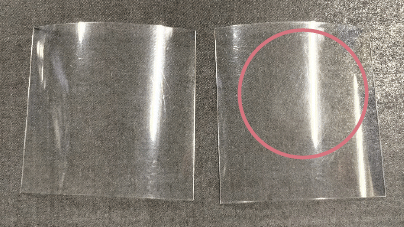
PET(left) and PET contaminated with silicon on the surface(right). Image Credit: JEOL USA, Inc.
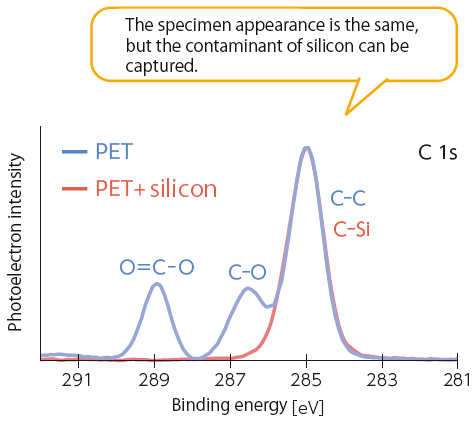
C 1s spectra of PET, PET with silicon. Image Credit: JEOL USA, Inc.
Chemical bonding state analysis
XPS is capable of conducting a chemical bonding state analysis in addition to elemental analysis.
For example, it is feasible to assess the kind of compound present on a lithium-ion battery's electrode.
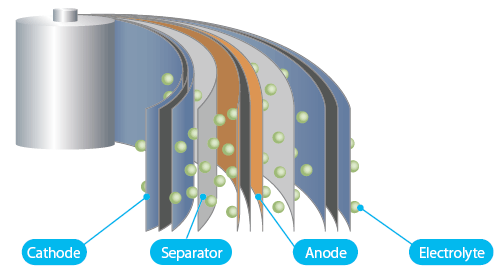
Structure of lithium-ion battery. Image Credit: JEOL USA, Inc.
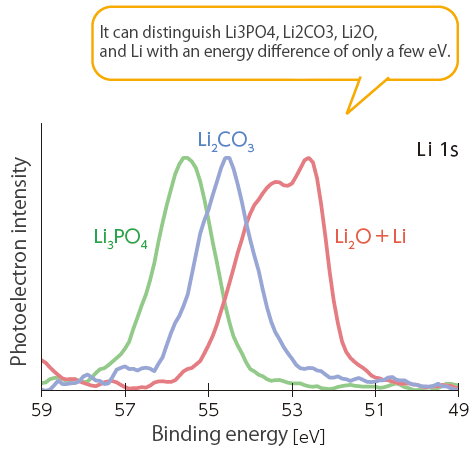
Li 1s spectra of various Li compounds. Image Credit: JEOL USA, Inc.
Depth Profile Analysis
The chemical bonding state at the interfaces and the layer structure of a very thin specimen of approximately 10 nm to a specimen of several μm thicknesses can be assessed by performing depth profile analysis with an XPS.
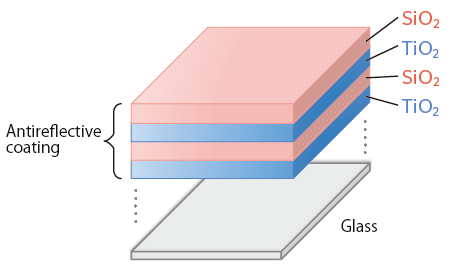
Schematic diagram of antireflective coating on glass surface. Image Credit: JEOL USA, Inc.
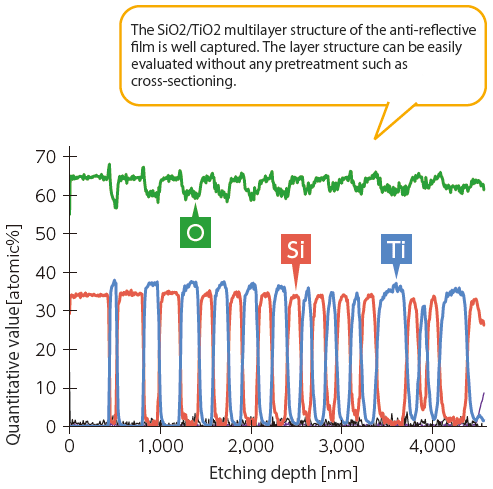
Depth profile analysis result of antireflective coating. Image Credit: JEOL USA, Inc.
Specifications
Source: JEOL USA, Inc.
| |
|
| Intensity (Mg Kα, 300 W equivalent) |
1,000,000 cps or more (Energy resolution (FWHM)
for Ag 3d5/2 1.00 eV or less) |
| X-ray source |
Maximum accelerating voltage and emission current: 12 kV, 50 mA, Mg/Al twin target |
| Illumination lens |
Three-stage cylindrical electrostatic lens |
| Energy analyzer |
Electrostatic hemispherical analyzer |
| Energy sweep method |
Constant Analyzer Energy method
Constant Retarding Ratio method |
| Detector |
Multi-channel plate |
| Etching ion source |
High-speed Kaufman-type |
| Ultimate pressure |
7×10-8 Pa or lower |
Application
Application JPS-9030
- Urushi
- Batteries
- Application of MALDI: Organic Thin Film Analysis
- Solid-State Batteries
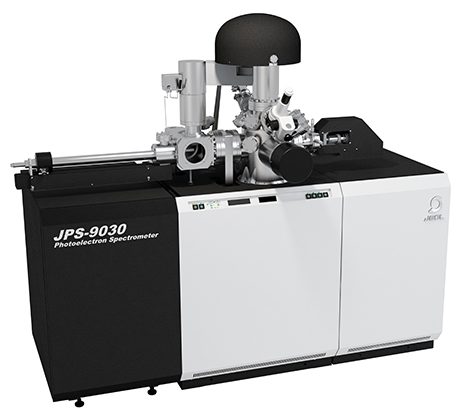
Image Credit: JEOL USA, Inc.
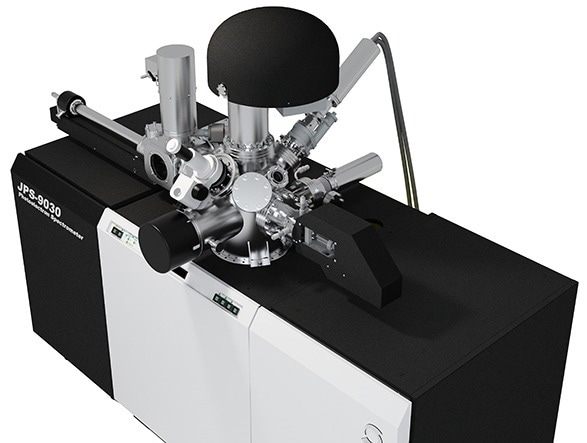
Image Credit: JEOL USA, Inc.